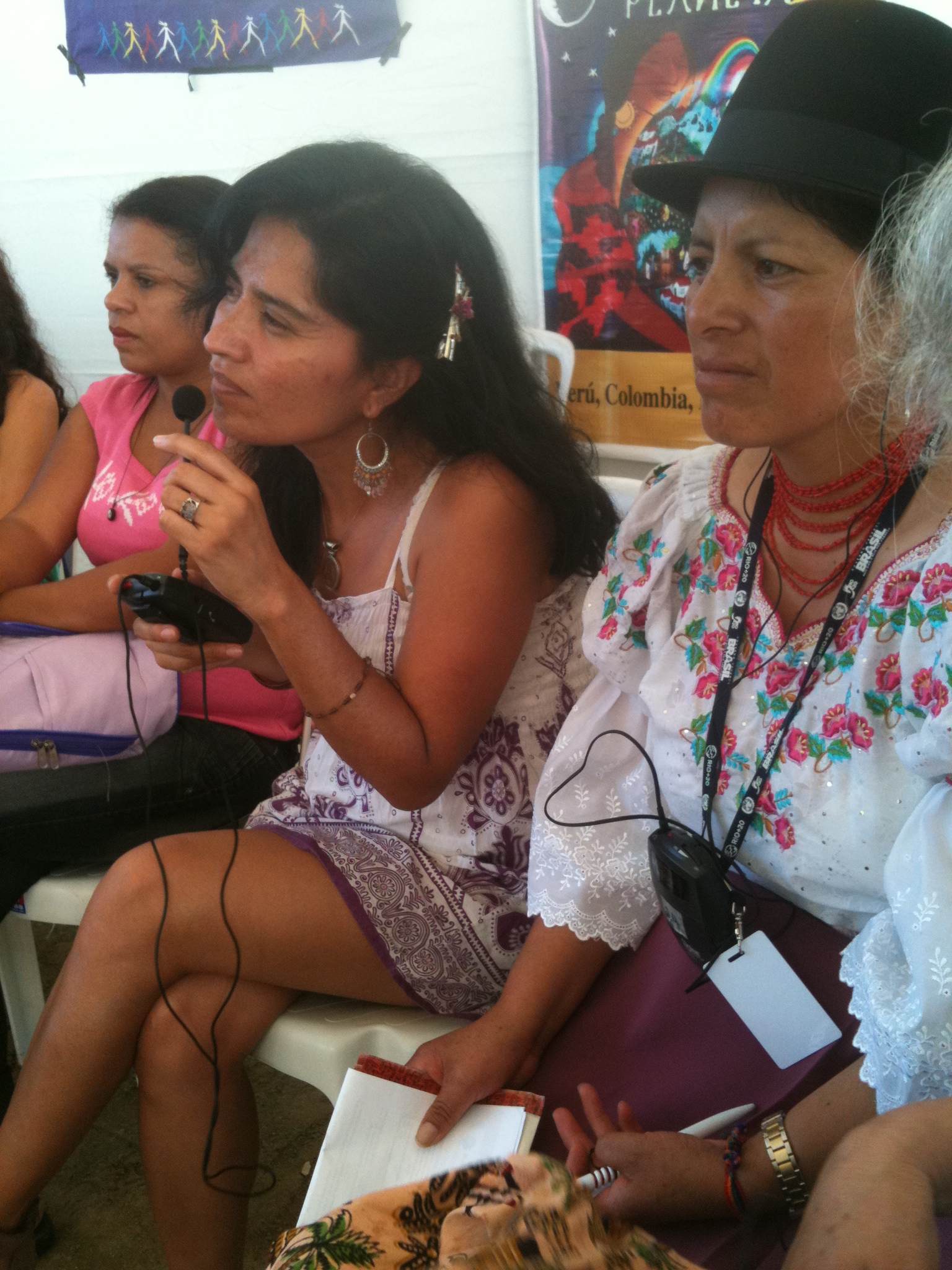At the People’s Summit in Rio, Brazil, I attended a very powerful and informative session on Women, Feminism, and Agroecology. Women had gathered from places such as Ecuador, Columbia, Brazil, Agentina, Costa Rica, Buenos Aires, and Morocco to discuss their common realities in different parts of the world and how they were faring under this global agrobusiness model which has resulted in agrotoxins becoming another food group and trees being pimped for their ability to remove CO2 from the atmosphere.
So many vital topics were brought up, and I will be exploring them in more depth as I unpack the learnings of this session, but today my thoughts are on challenges to buying local food as a parallel to environmental racism.
One sister from Brazil brought up the issue of “quality”and food. More specifically, “the discussion of quality as a means to avoid local production and circulation of food.” The narrative that comes out of big-ag, as well as all areas of media on aesthetics or beauty, is that unless it looks a certain way and is packaged in a particular package, the quality is suspect. We are taught to idealize row upon row of unnaturally large apples, oranges, potatoes, and peppers at big box stores, mistakingly believing that uniformity is somehow a natural state. We accept that these fruits and vegetables are waxed and polished, that flavor and nutrition are being sacrificed for aesthetics, and that obviously the only place this “perfection plant phenomenon” can happen is about a billion miles away from your home town thereby justifying flying them in from all corners of the world to meet our needs.
The other underlying message in the discussion of ‘quality’ is that big-ag can do it better. They can clean and package fruits and vegetables more effectively and safely that you little local farmers can. Unfortunately, many consumers believe this to be true even if most large food contaminations have come more as a result of the practices of commercial farming than at the produce stand of Saturday farmer’s markets.
It saddens me to hear children (and adults) look at the spectacular display of nature’s diversity and exclaim with all seriousness, “What’s wrong with it? Why does it look like that?”. I can’t help but reflect on how this myth of quality and beauty plays itself out all over the world with people too. This ego-centric, privileged assumption that has corporate entities deciding what is “natural”, “beautiful”, “healthy”, and “acceptable” (and who gets to be or have access to those things) is one of the foundational bricks of environmental racism and marginalization of certain communities. If you have any question as to the truth of this just think about where poor people live and where polluting facilities are located. Now, reflect on where the best or most effective city services such as landscaping, trash removal, and beautification projects are located…Now you tell me:
What is your city’s message about “Quality”? 
Women, Feminism, and Agroecology Session – Rio People’s Summit June 15, 2012
